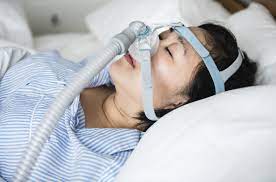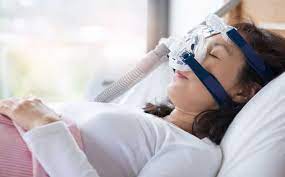For those with sleep apnea, getting good rest is crucial.
This includes elevating your head to improve your sleep apnea symptoms. Here are the best ways to do that.

Side Sleeping
As it turns out, sleeping on your side is the best way to sleep if you have sleep apnea. It keeps your airways open and prevents obstructions from causing breathing problems. Side sleeping is also a good position to adopt if you suffer from GERD, or acid reflux.
This sleeping position can nix heartburn, because it limits how much acid gets back into your throat and stomach. It also reduces the risk of snoring because it prevents your tongue and jaw from falling down onto your airway.
Some people find this sleep position uncomfortable, especially if they have pain in the neck or spine. If this is the case, it’s a good idea to add a pillow or two that will keep your head aligned with your shoulders. A firm mattress will also help minimize shoulder pain from a night of tossing and turning. This position may also aggravate certain back conditions, such as arthritis.
Stomach Sleeping
Stomach sleeping is the least popular sleep position, but it is also the best for people with sleep apnea. The reason is that gravity pulls down on the tongue and soft tissues, which helps keep the airway open. It is also the least likely to cause shoulder pain or numbness.
Some experts recommend placing a pillow behind you or fastening a tennis ball to the front and back of your sleep shirt. These tools make rolling over to your back painful and will help you stay on your side.
Taking steps to change your sleep position can help reduce your symptoms of obstructive sleep apnea, including snoring, restless sleep, fatigue, dry mouth, night sweats and irritability. Adding regular exercise can further improve your health and your sleep. Try to get 30 minutes of moderate aerobic exercise two or three times per week.
Back Sleeping
If you are a back sleeper and suffer from sleep apnea, try sleeping with your head propped up on pillows to keep it open and reduce the occurrence of apnea episodes.
Head Sleeping
People who sleep on their back make the worst sleeping position for sleep apnea, as gravity causes the tongue to fall back and restrict the airway. This can increase the number and duration of apneas.
Sleeping on your side reduces apneas, as it encourages blood flow and prevents the tongue from falling back into the airway. If you have trouble staying on your side, try using a pillow to help you stay in the right position needs read more hear.





















